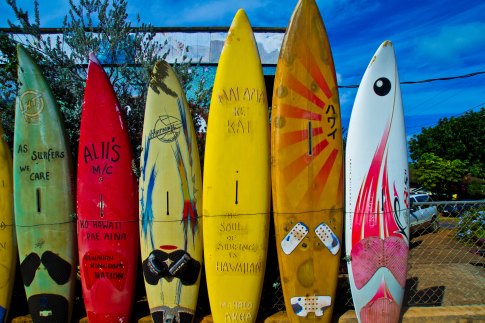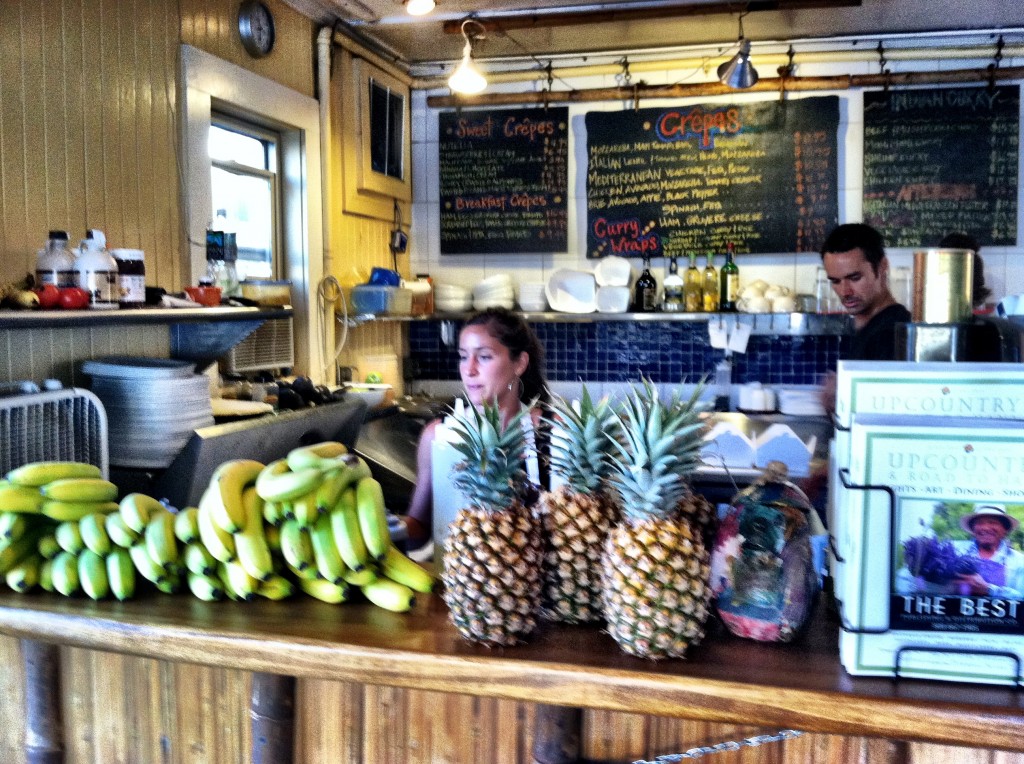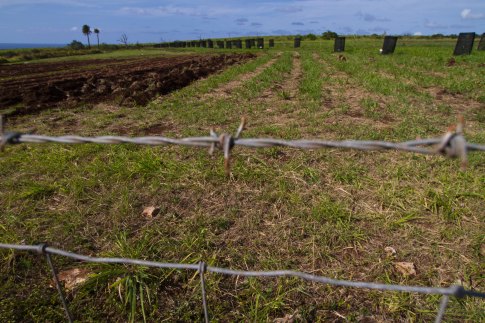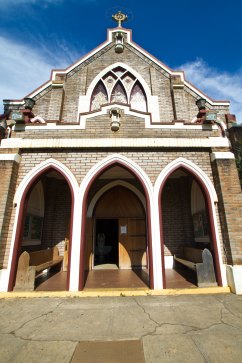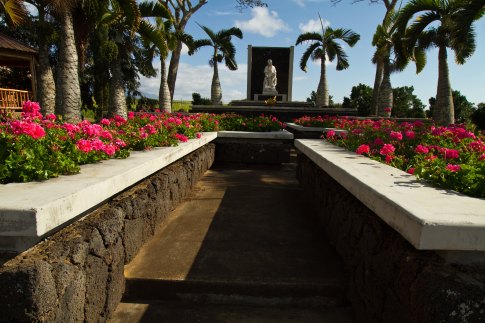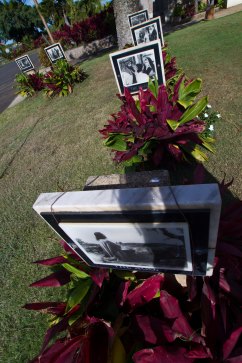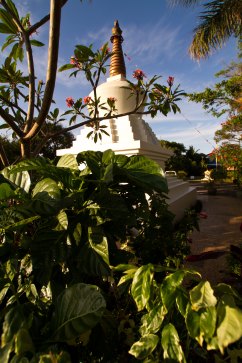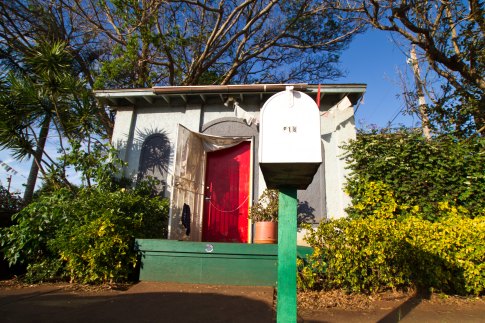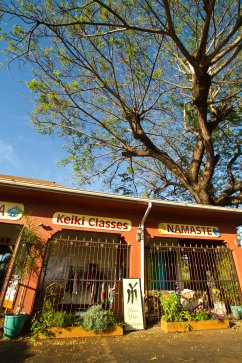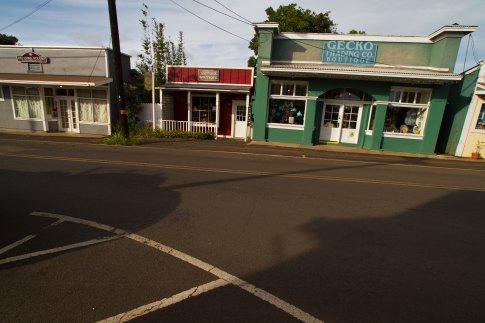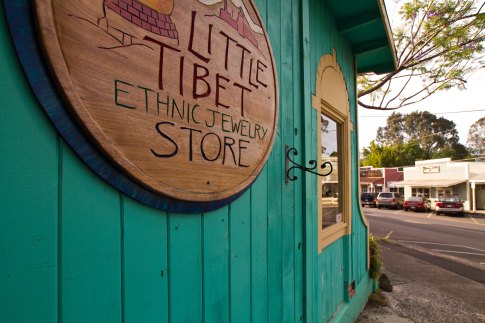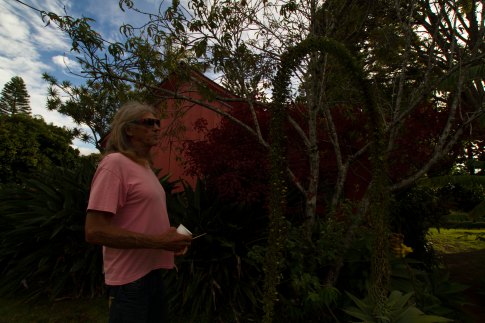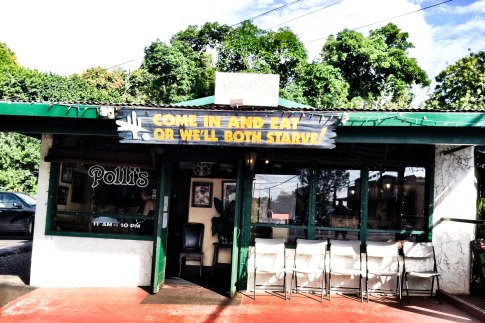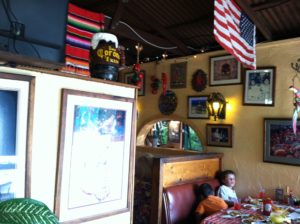If you go to Hawaii and don’t see at least one surf board, then you’ve missed a big part of the culture. People GO to Hawaii to surf and locals take great pride in the fact that they have great ‘surf.’ I passed this little surf shop on my way to Makawao, which was in fact my first stop on Maui after I landed on a mid-May trip recently.
Why? Someone described Makawao as a town that has cowboys, hippees and art. How could I not go? Before even checking into my hotel room, I grabbed the map and took off south from the airport, into the interior and over to Makawao, which isn’t a long drive btw.
Even after all the stops I made on both Maui and the Big Island of Hawaii during my stay, there’s something special about that little drive, something authentically special.
You have to pass through the trendy town of Pa’ia which is also has a hippee and artist flavor to it, although its far more developed and crowded than Makawao to the south along Route 390.
They have some charming little restaurants and shops in Pa’ia, its a great place to grab a coffee or a smoothie, or meet up with friends in one of the fudge, coffee or ice cream shops.
Cafe Des Amis in Pa’ia has a very hospital staff and fabulous crepes. There was a cute 30 year old (I asked) Australian working behind the counter when I was there the first time and when I asked if they were on Twitter to give them a call out, he said, “What’s that? That thing like Facebook but only faster right?”
Yup, not everyone knows what Twitter is or lives and breathes social media every day like so many of us do in Silicon Valley. I had to laugh and found this awareness to be pretty similar regardless of who I talked to, regardless of age or occupation, on both islands.
Along the way, there isn’t a lot of “big things” to see and do, but if you pay close enough attention, you’ll catch the smaller charming things you should take in, like the Hali’imaile General Store for example. There’s also sugar cane fields in all directions, all of which are irrigated by water from the Hana coast.
Located on the mid-slopes of Maui’s Haleakala volcano, Makawao has one foot in its plantation past and another in its arts community. While this town is far from big, it is apparently the biggest little town in the region locally known as Upcountry Maui and is famous for its Hawaiian cowboys, or paniolo. While it may not feel quite as upcountry as it does in Jula further south along Route 377 (where O’o Farm is), it does cool off a little at night, although it was very hot and sunny when I was there.
There’s a charming church along the way and a temple outside Pa’ia.
Small quaint houses along side the road…
Holistic healing, yoga and keiki is an integral part of the culture.
The center of Makawao is pretty quiet even though there are a number of charming little shops, boutiques, cafes, art galleries & jewelry stores on both sides of the main drag.
I met Bruce, one of the most laid back people I met during my stay in Hawaii. Originally from Canada, he has been living in Hawaii for most of his adult life. And, he lives in a funky, old house surrounded by beautiful flowers and green banana and lemon trees. (big monster lemons).
At the end of the main street, there’s an authentic local restaurant named Polli’s with an amusing sign on the front of it that reads: Come In And Eat or We’ll Both Starve! Love it. The inside is equally cute and it makes you want to buy a coffee from them if nothing else even if you’re not hungry or thirsty.
Since the late 19th century, horseback-riding paniolo have wrangled cattle in Maui’s wide-open upland fields. The Makawao Rodeo, held yearly on the Fourth of July, is Hawaii’s largest paniolo competition and has been an Upcountry tradition for more than 50 years. The weekend events include a parade and traditional rodeo competitions such as barrel racing, calf roping and bareback bronco riding, all with a few Hawaiian twists. Makawao is also home to the Hui Noeau Visual Arts Center, where visitors can take classes and explore free gallery exhibits.
It’s a fascinating and pretty little drive especially if you go slowly and take in the little things along the way!
For more posts on Hawaii, check out this section. To experience nature, botanical gardens and rainforest by segway, check out this post. For photos on the Hawaii Volcanoes National Park. For more on Hawaii and food/wine only, go here. For Hawaii and lodging, here. For more on Hawaii and arts, go here.

Renee Blodgett is the founder of We Blog the World. The site combines the magic of an online culture and travel magazine with a global blog network and has contributors from every continent in the world. Having lived in 10 countries and explored nearly 80, she is an avid traveler, and a lover, observer and participant in cultural diversity.
She is also the CEO and founder of Magic Sauce Media, a new media services consultancy focused on viral marketing, social media, branding, events and PR. For over 20 years, she has helped companies from 12 countries get traction in the market. Known for her global and organic approach to product and corporate launches, Renee practices what she pitches and as an active user of social media, she helps clients navigate digital waters from around the world. Renee has been blogging for over 16 years and regularly writes on her personal blog Down the Avenue, Huffington Post, BlogHer, We Blog the World and other sites. She was ranked #12 Social Media Influencer by Forbes Magazine and is listed as a new media influencer and game changer on various sites and books on the new media revolution. In 2013, she was listed as the 6th most influential woman in social media by Forbes Magazine on a Top 20 List.
Her passion for art, storytelling and photography led to the launch of Magic Sauce Photography, which is a visual extension of her writing, the result of which has led to producing six photo books: Galapagos Islands, London, South Africa, Rome, Urbanization and Ecuador.
Renee is also the co-founder of Traveling Geeks, an initiative that brings entrepreneurs, thought leaders, bloggers, creators, curators and influencers to other countries to share and learn from peers, governments, corporations, and the general public in order to educate, share, evaluate, and promote innovative technologies.

